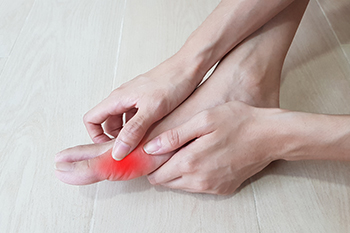
Gout is a type of arthritis that often affects the joints of the big toe, and is caused by the accumulation of uric acid crystals. There are four distinct stages of gout. The first stage, known as asymptomatic hyperuricemia, is characterized by high levels of uric acid in the blood without any noticeable symptoms. The second stage is acute gout that occurs when uric acid forms crystals which begin to deposit in the joints. This can lead to sudden and severe pain, swelling, and redness. If left untreated acute gout can progress to the third stage, known as intercritical gout, or the interval between gout attacks. During this phase, patients can experience periods of remission where symptoms subside, but it is essential to maintain proper management and lifestyle changes to prevent future flare ups. The final stage is chronic tophaceous gout, which occurs after repeated gout attacks. In this stage, large uric acid crystal deposits called tophi, can develop beneath the skin surrounding the joints and in other tissues. Tophi can lead to joint damage and deformities. Early detection and appropriate management are key to preventing the progression of gout. If you believe you have gout, it is suggested that you make an appointment with a podiatrist for treatment options.
Gout is a foot condition that requires certain treatment and care. If you are seeking treatment, contact one of our podiatrists from New York Foot and Ankle. Our doctors will treat your foot and ankle needs.
What Is Gout?
Gout is a type of arthritis caused by a buildup of uric acid in the bloodstream. It often develops in the foot, especially the big toe area, although it can manifest in other parts of the body as well. Gout can make walking and standing very painful and is especially common in diabetics and the obese.
People typically get gout because of a poor diet. Genetic predisposition is also a factor. The children of parents who have had gout frequently have a chance of developing it themselves.
Gout can easily be identified by redness and inflammation of the big toe and the surrounding areas of the foot. Other symptoms include extreme fatigue, joint pain, and running high fevers. Sometimes corticosteroid drugs can be prescribed to treat gout, but the best way to combat this disease is to get more exercise and eat a better diet.
If you have any questions please feel free to contact one of our offices located in Franklin Square, Bethpage, Brooklyn, and Massapequa, NY . We offer the newest diagnostic and treatment technologies for all your foot and ankle needs.
